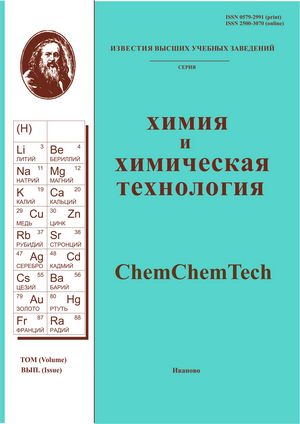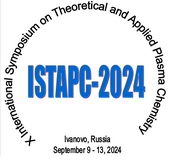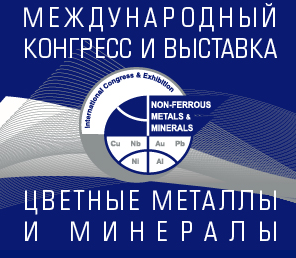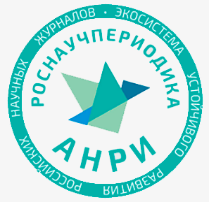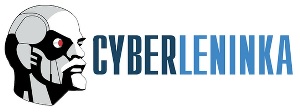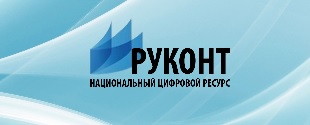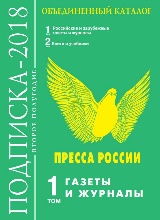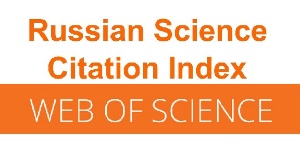ИНГИБИРОВАНИЕ КОРРОЗИИ БЕТОННОГО КОМПОЗИТА КОМБИНИРОВАННОЙ ДОБАВКОЙ НИТРИТА НАТРИЯ И СИЛИКАТА НАТРИЯ
Аннотация
Проведены исследования ингибирующих свойств нитрита натрия в комбинированной добавке с силикатом натрия при коррозии железобетона. Установлено, что повышение содержания нитрита натрия в комбинированной добавке с силикатом натрия приводит к уменьшению прочности бетона после отверждения на воздухе в течение 28 сут. Однако, при коррозии бетона, содержащего большее количество нитрита натрия в качестве ингибитора, в смеси 1%-ого раствора плавиковой кислоты (HF) и углекислоты (Н2СО3), его прочность на сжатие снижается в меньшей степени. Это подтверждается случаями частых расколов образцов при испытаниях ударно-импульсным методом. Наименьшее количество раскалываний наблюдалось у образцов, содержащих 3,2% нитрита натрия и 0,8% силиката натрия, а наибольшее – у образцов, содержащих 0,8% нитрита натрия и 3,2% силиката натрия. С помощью метода контактной коррозии построены коррозионные диаграммы стальной арматуры из стали марки Ст3 в бетоне без добавок и с комбинированными ингибирующими добавками нитрата и силиката натрия. Коррозионные диаграммы позволили определить показатели скорости коррозии стальной арматуры в бетонах с ингибирующими добавками различных составов. Добавки способствуют быстрому снижению значения плотности тока коррозии. Повышение концентрации нитрита натрия в составе ингибирующей добавки приводит к снижению скорости анодного растворения арматурной стали. Введение в бетон 3,2% нитрита натрия и 0,8% силиката натрия замедляет анодное растворение арматурной стали почти в 2 раза.
. . . . . . . . . . . . . . . . . . . . . . . . . . . . . . . . . . . . . . . . . . .
Литература
Ramachandran V.S. Concrete Admixtures Handbook Properties, Science and technology. William Andrew Publishing. 1996. 1184 p.
Kuznetsov Y.I. Progress in the science of corrosion inhibitors. Int. J. Corros. Scale Inhib. 2015. V. 4. N 1. P. 15-34. DOI: 10.17675/2305-6894-2015-4-1-015-034.
Rumyantseva N.P., Belova V.S., Balmasov A.V. Investigation of inhibitor influence on corrosion behavior of structural steels. ChemChemTech [Izv. Vyssh. Uchebn. Zaved. Khim. Khim. Tekhnol.]. 2020. V. 63. N 11. P. 65-70 (in Russian). DOI: 10.6060/ivkkt.20206311.6222.
Dariva C.G., Galio A.F. Corrosion inhibitors – Principles, mechanisms and applications. Develop. Corr. Pro-tect. 2014. P. 365-380. DOI: 10.5772/57255.
Papavinasam S. Corrosion Inhibitors. Uhlig’s Corrosion Handbook. 2011. P. 1089-1105. DOI: 10.1002/9780470872864.ch71.
Ahmad A., Kumar A. Comparative Behaviour of Nitrite and Nitrate for the Protection of Rebar Corrosion. J. Inst. Eng. India Ser. D. 2017. V. 98. P. 177-187. DOI: 10.1007/s40033-016-0125-9.
Cao Z., Hibino M., Goda H. Effect of nitrite ions on steel corrosion induced by chloride or sulfate Ions. Inter-nat. J. Corr. 2013. P. 853730. DOI: 10.1155/2013/853730.
Talipov L.N., Velichko E.G., Semenov V.S. Study of synergetic effect of the complex polycarboxylate anticor-rosion additive in the model of pore concrete fluid. Vestn. MGSU. 2020. V. 15. N 6. P. 824-833 (in Russian). DOI: 10.22227/1997-0935.2020.6.824-833.
Talipov L.N., Velichko E.G., Tembulatov S.I. Influence of polymer surfactants on the corrosion of steel rein-forcement in concrete as part of a complex anti-corrosion additive. Stroit. Mater. 2020. N 3. P. 16-21 (in Russian). DOI: 10.31659/0585-430X-2020-779-3-16-21.
Gedvillo I., Zhmakina A., Andreev N. Comparison of protective properties of sodium nitrite, hydrochinon and pyrocatechine in model pore concrete liquid. Corr.: Mater. Protection. 2019. N 11. P. 19-25. DOI: 10.31044/1813-7016-2019-0-11-19-25.
Makarova I.A., Liberovskaya S.V. Acid-resistant and heat-insulating ceramic materials based on silica fume. Izv. Vyssh. Uchebn. Zaved. Invest. Stroit. Nedvizh. 2019. V. 9. N 4. P. 742-753 (in Russian). DOI: 10.21285/2227-2917-2019-4-742-753.
Kudryavtsev P.G., Figovsky O.L. Nanostructured materials, production and application in construction. Nano-tekhnol. Stroi.: Nauch. Internet-Zhurn. 2014. V. 6. N 6. P. 27-45 (in Russian). DOI: 10.15828/2075-8545- 2014-6-6-27-45.
Meza A., Sánchez C., Ortiz J., Peralta L. Comparison between destructive and nondestructive tests in the evaluation of abrasion resistance of concrete. J. Testing Evaluation. 2017. V. 46. Iss. 3. P. 906-912. DOI: 10.1520/JTE20160159.
Kudyakov A., Prischepa I., Kiselev D., Prischepa B. Quality control of concrete at the stage of designing its composition and technology. AIP Conf. Proceed. 2016. V. 1698. P. 070016. DOI: 10.1063/1.4937886.
Serebryakov A., Chirkin M., Mishin V., Klimakov V., Davydov G., Gorlin O., Ulitenko A. Electronic system of non-destructive buildings and structures condition control. 8th Mediterranean Conference on Embedded Com-puting, (MECO) – Proceedings. Budva, Montenegro. 2019. P. 1-4. DOI: 10.1109/MECO.2019.8760113.
Fedosov S.V., Roumyantseva V.E., Konovalova V.S., Goglev I.N., Narmaniya B.E. Control of corrosion de-struction processes of building materials on the basis of mass transfer laws. Vestn. Grazhdan. Inzhenerov. 2019. N 3 (74). P. 106-111 (in Russian). DOI: 10.23968/1999-5571-2019-16-3-106-111.
Roumyantseva V.E., Goglev I.N., Loginova S.A., Truntov P.S., Burkov A.A. Development and research of properties cement concrete hardening accelerator additive based on a mixture of inorganic fluorine-containing salts. IOP Conf. Ser.: Mater. Sci. Eng. 2020. V. 753. N 4. P. 052026. DOI: 10.1088/1757-899X/753/5/052026.
Rumyantseva V.E., Konovalova V.S. The Reinforced Concrete Reinforcement Corrosion Degradation Inhibi-tion with Nitrates of Alkali and Alki-Earth Metals. Mater. Sci. Forum. 2020. V. 1011. P. 72-78. DOI: 10.4028/www.scientific.net/MSF.1011.72.
Velichko E., Talipov L. Theoretical and practical aspects of improving the durability of steel reinforcement in transport designs, using passivation and plasticizing chemical additives. IOP Conf. Ser.: Earth Environ. Sci. 2017. V. 90. P. 012202. DOI: 10.1088/1755-1315/90/1/012202.
Rumyantseva V.E., Konovalova V.S. The Effect of Inhibitors Introduced into Concrete on Corrosion of Con-crete Steel Reinforcement. Vopr. Sovr. Nauki Praktiki. Un-t im. V.I. Vernadskiy. 2016. N 1 (59). P. 29-34 (in Russian). DOI: 10.17277/voprosy.2016.01.pp.029-034.

